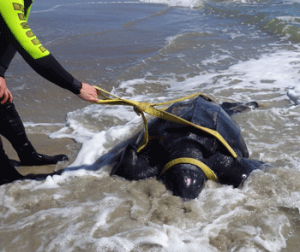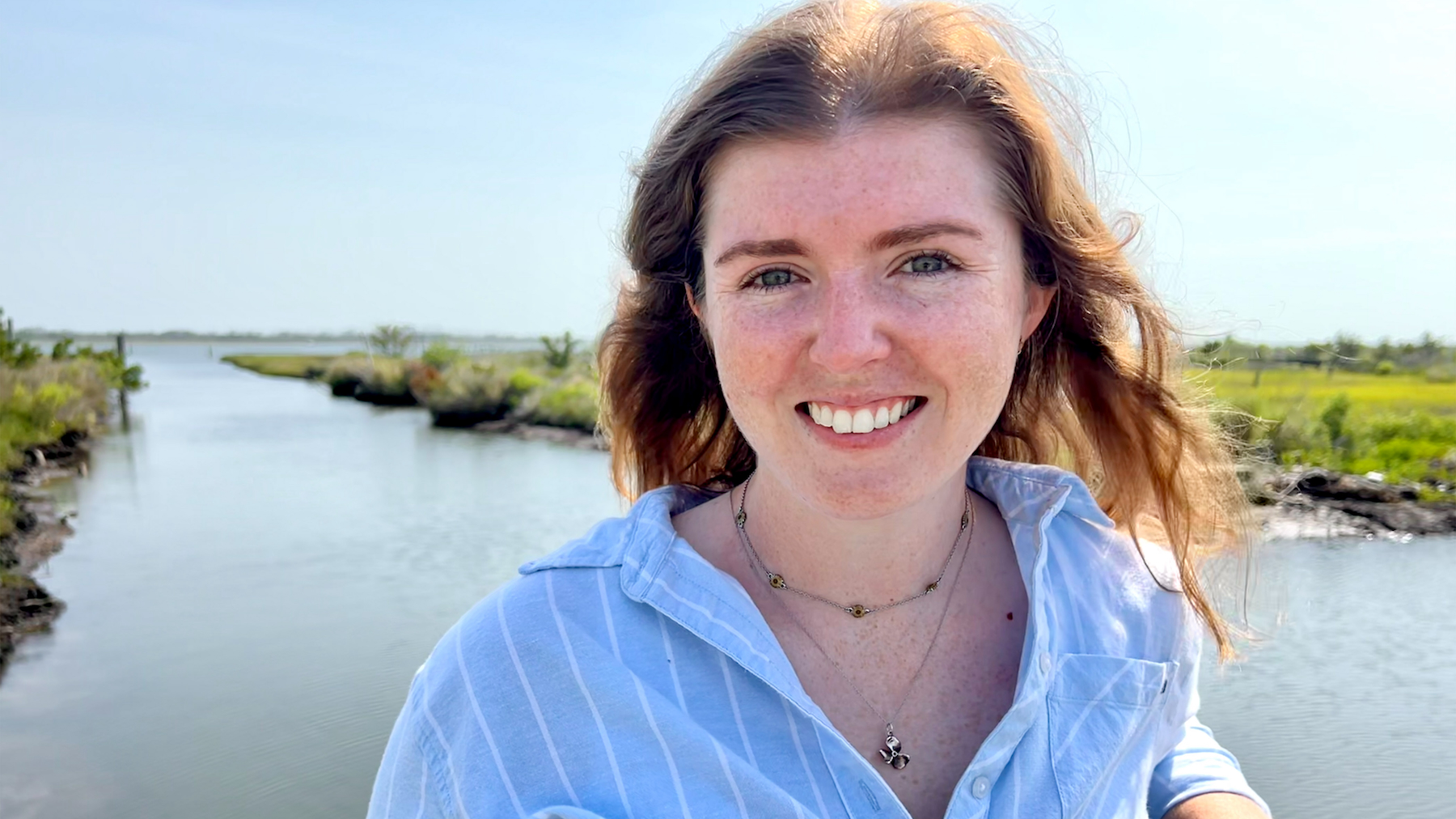Leatherback Sea Turtle Stranded in Atlantic Beach

On Saturday, March 8, a large sea turtle was reported stranded in Atlantic Beach, NC. Veterinarians and staff from NCSU-CMAST responded to find an adult female leatherback turtle in shallow surf just off the New Bern Street public beach access point. Leatherbacks are the largest of all sea turtles, and are very rarely seen nesting on North Carolina beaches, although they do feed and migrate offshore. They are named for their unique carapace that has ridges covered with thick, black, “leathery” skin, unlike the scutes of other sea turtles.
This turtle was not moving and initially seemed to be dead. The Atlantic Beach Police department and Fire/Rescue department were also on scene to assist, and used a winch to move the nearly 700 lb (310 kg) turtle onto the beach above the water line. A tiny bit of movement was seen in the hind flippers and the turtle took a very shallow breath, but there was still no sign of life in her eyes or front flippers.

Determining time of death can be very difficult in turtles since they may continue to have a heart beat and muscle reflexes for some time after the brain has ceased to function. Because the turtle appeared to be brain-dead and was clearly not going to survive, the decision was made to humanely euthanize her.
Leatherbacks are an endangered species, as are most other sea turtles, so responders must be authorized to approach and handle them, and special permission needed to be obtained from the NC Wildlife Resources Commission and US Fish & Wildlife Service to euthanize the turtle. A blood sample was collected, and euthanasia solution (the same drug veterinarians use to put dogs and cats to sleep) was injected into a large vein in the turtle’s neck.

With the assistance of the Fort Macon Park Service and a forklift, the turtle was moved off the beach and transported by pick-up truck to CMAST, where a necropsy (animal autopsy) was performed that afternoon.
The leatherback was in good body condition, with no obvious external injuries. There was a large amount of water and foam in the respiratory tract, indicating the animal had inhaled water and drowned, but it is quite possible this occurred while she was in the surf, and was not the main reason for her stranding.

There were several pieces of thin plastic in her GI tract. Leatherback sea turtles are jellyfish-eaters, and frequently mistake floating plastic bags for their food. We don’t know if this plastic was enough to prevent the turtle from eating or digesting food normally, but there were signs that she was breaking down body fat for energy, and probably had not eaten lately.
Tissue samples were collected and will be sent to Florida for microscopic examination by a veterinary pathologist who specializes in sea turtles. This may help identify any underlying illnesses that could have contributed to the turtle’s stranding and death. Multiple other samples were collected for scientists at other institutions investigating the physiology of this rarely encountered species.
This turtle had metal flipper tags indicating that she had nested on the island of Trinidad, in the Southern Caribbean, at some point in the past. The stranding has been reported to the group that tagged the turtle, and hopefully we will receive more information about when and where this turtle has been seen before.
Many thanks are due to the Atlantic Beach Police and Fire Departments, the Fort Macon State Park staff, AB Public Works department, and the NC Wildlife Resources Commission for their assistance in responding to this uncommon and very large turtle! (Story by Dr. Emily Christiansen)
- Categories:


